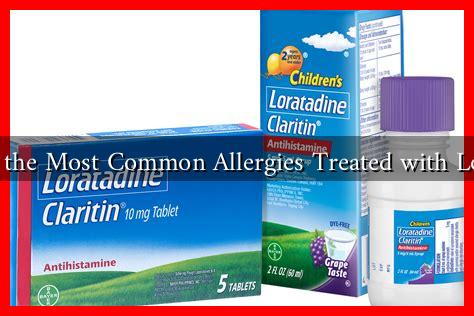-
Table of Contents
What Are the Most Common Allergies Treated with Loratadine?
Loratadine, a second-generation antihistamine, is widely used to alleviate symptoms associated with various allergic reactions. Unlike first-generation antihistamines, loratadine is less likely to cause drowsiness, making it a popular choice for individuals seeking relief from allergies without the sedative effects. This article explores the most common allergies treated with loratadine, providing insights into their symptoms, prevalence, and treatment options.
Understanding Allergies and Their Symptoms
Allergies occur when the immune system overreacts to substances known as allergens. These allergens can be found in food, pollen, dust, pet dander, and more. Common symptoms of allergies include:
- Runny or stuffy nose
- Itchy or watery eyes
- Sneezing
- Skin rashes or hives
- Itching in the throat or ears
These symptoms can significantly impact an individual’s quality of life, making effective treatment essential.
Common Allergies Treated with Loratadine
Loratadine is primarily used to treat the following common allergies:
1. Seasonal Allergies (Hay Fever)
Seasonal allergies, also known as hay fever or allergic rhinitis, are triggered by pollen from trees, grasses, and weeds. According to the Asthma and Allergy Foundation of America (AAFA), approximately 19.1 million adults and 5.2 million children in the U.S. suffer from seasonal allergies. Symptoms typically peak during spring and fall, leading to discomfort and reduced productivity.
2. Perennial Allergies
Perennial allergies occur year-round and are often caused by indoor allergens such as dust mites, mold, and pet dander. The American College of Allergy, Asthma, and Immunology (ACAAI) estimates that about 30% of adults and 40% of children are affected by perennial allergic rhinitis. Loratadine effectively alleviates symptoms associated with these persistent allergens.
3. Allergic Conjunctivitis
Allergic conjunctivitis is an inflammation of the eye caused by allergens. Symptoms include redness, itching, and tearing. This condition can be triggered by pollen, pet dander, or dust. A study published in the journal *Ophthalmology* found that nearly 40% of individuals with allergic rhinitis also experience allergic conjunctivitis. Loratadine can help relieve the eye-related symptoms associated with this condition.
4. Skin Allergies (Urticaria)
Urticaria, commonly known as hives, is a skin reaction characterized by raised, itchy welts. It can be triggered by food, medications, or environmental factors. The prevalence of chronic urticaria is estimated to be around 1% of the population. Loratadine is often prescribed to manage the itching and discomfort associated with this condition.
Case Studies and Statistics
Research indicates that loratadine is effective in managing allergy symptoms. A clinical trial published in the *Journal of Allergy and Clinical Immunology* demonstrated that loratadine significantly reduced nasal and ocular symptoms in patients with seasonal allergic rhinitis compared to a placebo. Furthermore, a meta-analysis of multiple studies found that loratadine provided relief for up to 24 hours, making it a convenient option for daily use.
Conclusion
Loratadine is a versatile antihistamine that effectively treats a variety of common allergies, including seasonal and perennial allergic rhinitis, allergic conjunctivitis, and skin allergies like urticaria. With its minimal sedative effects and long-lasting relief, loratadine has become a go-to choice for many individuals seeking to manage their allergy symptoms. Understanding the types of allergies treated with loratadine can empower patients to make informed decisions about their health and seek appropriate treatment options.
For more information on allergies and their management, you can visit the Asthma and Allergy Foundation of America.

